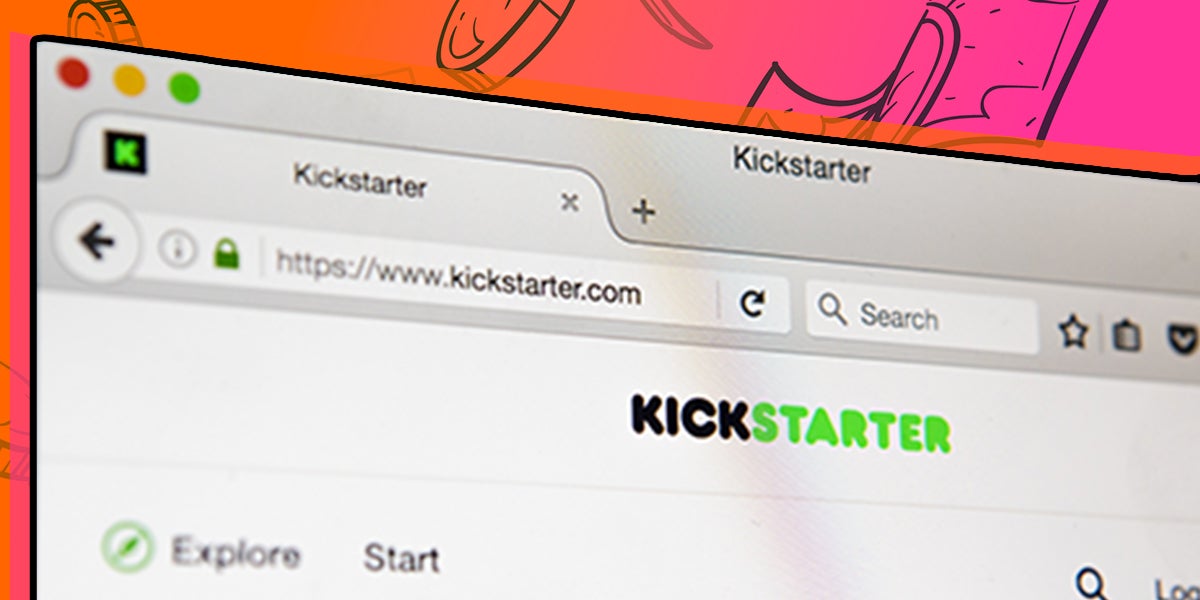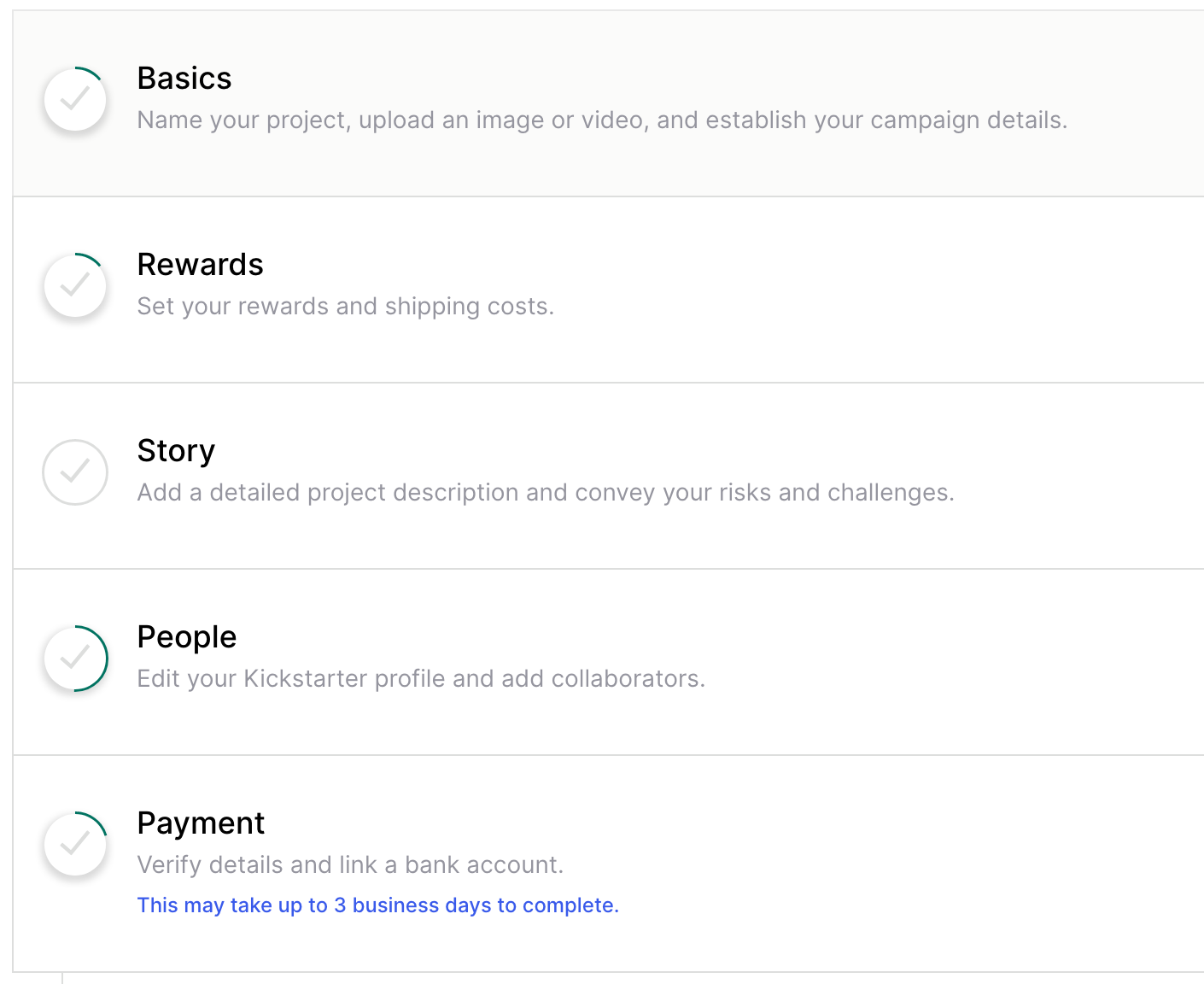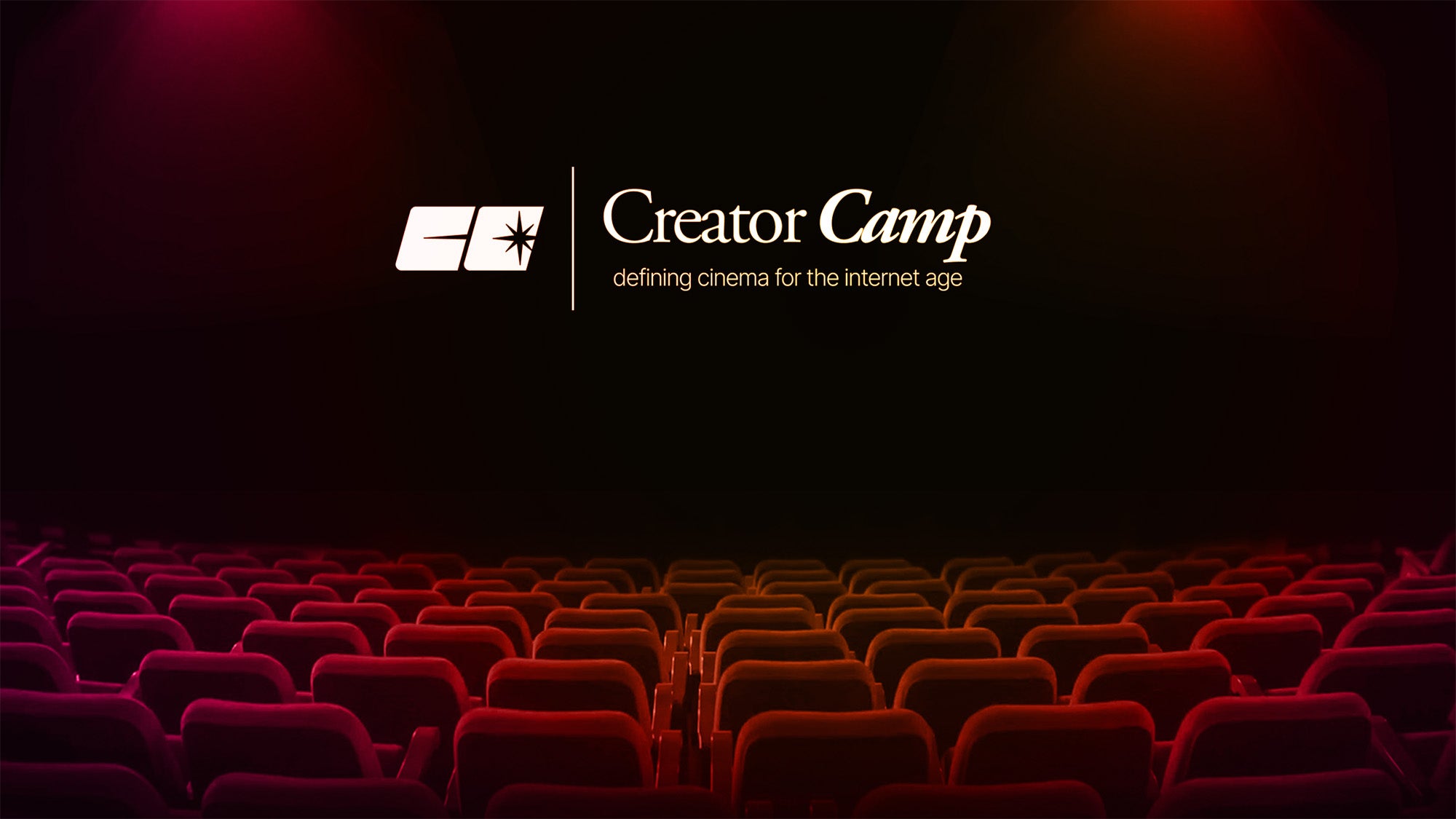
Have you ever had a drop-dead, brilliantly creative idea for a project — but have no idea how to make it a financial reality? Kickstarter may be for you. No, it’s not like GoFundMe. Kickstarter is specifically for creative projects like art, design, books, film, music, and technology.
Remember the game Exploding Kittens? Or the “Good Omens” comic? Or the Veronica Mars movie project? Yeah, that was Kickstarter. Basically, if folks like your idea, they can pledge money to help you make it happen.
Voila! You’re a modern-day Michelangelo! And you don’t have to worry about the Medicis hounding you.
How To Start A Kickstarter
Anyone who meets Kickstarter’s creator requirements is eligible to start an account. You must make it clear what you want to accomplish through your project. You must also explain why funds are necessary and how you plan to utilize them. And of course, there are some basic rules to follow:
Once you’re sure your project sounds like a good fit, you need to decide on a funding goal. Then it’s time to fill out all of the details needed to launch your project page.

How Does Kickstarter Crowdfunding Work?
Kickstarter uses the “all-or-nothing” idea of crowdfunding. When Kickstarter launched in 2009, they established this model to “protect creators and to minimize risk for everyone.”
If your project doesn’t reach its goal, raised funds don’t get collected. As such, your funding goal should be the minimum amount needed to fulfill your goal and all rewards for your backers.
So, figure out a budget and make a fundraising deadline. A few things to remember: you’ll need to create a goal that covers all your production needs, including shipping materials and costs. You’ll need to cover the distribution of promised rewards to backers, processing fees, and other charges.
Crowdfunding campaigns on Kickstarter can run for up to 60 days total, but that doesn’t mean you need to take the maximum amount of time. You can even have a one-day campaign — but 30-day campaigns tend to be the most successful.
According to DataRes at UCLA, “the website claims that ‘30 days works best,’ and our data analysis agrees with this statement as well: 64.54% of successful campaigns were completed in the first 30 days.”
Once you launch your project, you lock in your funding goal and deadline. You can’t pause an ongoing campaign, but you can cancel and relaunch at another time — with no penalty. Look, occasionally, everything crashes and burns (sometimes literally), so get out your fire extinguisher and start again.
Do Backers Make Money On Kickstarter?
No. Backers that support a Kickstarter project get to choose from a variety of rewards offered by the project creator, but money is not one of them. What might you expect from a creator?
Backer benefits can include anything from a copy of the book or project being funded to an experience related to the project. Backers can also choose to support a project without getting anything back in return. Enjoy the ride!
Ownership of the project belongs 100% to the creator, and Kickstarter “cannot be used to offer equity, financial returns, or to solicit loans.”
How Do You Get Paid When You Create A Kickstart Project?
Let’s say your project has been successfully funded. That’s great! So how do you get your money? The funds will be debited directly from your backers’ credit cards. This can take about 14 days.
The payout will be a single transaction that will appear in your account as coming from Kickstarter PBC. Depending on your bank or institution, it can take an additional 3-14 days from that point for the funds to appear in your account.
Does Kickstart Conduct A Credit Check?
While Kickstarter doesn’t state outright that you need a particular minimum credit score, they do stress financial reliability. A high credit score is one way of showing that a project creator is financially responsible.
In addition to credit scores, there are a few other factors evaluated when judging a creator’s eligibility: income, payment history, and ability to fulfill their commitments.
What Happens To The Money If A Kickstarter Project Fails?
Not every Kickstarter project is a success story! Don’t let that deter you — just be realistic. Have a plan in place should your Kickstarter fail to reach its goal. Since Kickstarter has an all-or-nothing funding model, all pledges will be canceled and the creator won’t receive any of the money.
All of the money is returned to backers, hence the “all or nothing” philosophy. Kickstart does not hold funds on the creator’s behalf, does not guarantee the creator’s work, and doesn’t offer refunds.
When a creator issues a refund, it should be applied to the card pledged. It can take up to 30 days to appear on the card. If your campaign is successful (congrats), Kickstarter charges the creator a 5% fee on the total funds raised.

What Happens If The Kickstarter Project Is Overfunded?
What a happy problem! So many people believe in you that they are throwing money in your direction. Do you need to give that extra money back? No, you do not!
Projects on Kickstarter are live until they reach their funding deadline, so that means it is possible for creators to reach their goal and also beat it. In this situation, the creator will collect all of the funds minus Kickstarter’s fees.
What should you do with the additional funds? Well, you can give the people who helped you out so generously better and different rewards. You can also choose to build on your project. Think big!
What Are The Disadvantages Of Kickstarter?
Kickstarter is not the only game in town. There’s Patreon, which sells digital products on a subscription basis. Indiegogo is also a really popular crowd-funding source for people working on creative projects.
One major difference is that Indiegogo has a flexible funding model, which allows campaigns to keep the money they’ve raised even if they do not meet their goal.
What are some of the risks you face when using Kickstarter?
The most significant risk is failure. While failure is always a risk when you crowdfund, Kickstarter seems to be big on both payoffs and spectacular crashes.

One of the worst failures was the iBackPack 2.0, which turned out to be an elaborate scam run by Doug Monahan. The FTC sued Monahan for running a “deceptive crowdfunding scheme” and banned him from using crowdfunding platforms. The FTC also could not recover any money to return to backers.
While Kickstarter offers the opportunity to get large investments, there is no assurance that you will be successful. Your project might get a slow start. You might have limited visibility. Even projects with funding and a great plan have unforeseen challenges that cause production to halt or stop altogether.
Kickstarter Can Be Stressful For Investors
Kickstarter can also be stressful if you’re an investor and a control freak. Let’s say you find an idea you like and decide to back a creator. Then you have to sit and…wait. And wait. Hopefully you have good communication, because you’ve just put a lot of faith in a person to deliver on your expectations.
When a campaign goes south, a backer has to get the money returned from the creator, which hopefully isn’t a problem. However, as with anything involving money, there are scammers out there.
Even though a creator has to go through a series of steps to verify their identity, it’s not guaranteed that a scammer won’t succeed in worming their way in. Kickstarter suggests you do your own research as well to make sure the person you’re backing is who they say they are.
If you’re not a highly competitive person, Kickstarter might not be for you. Only about 35% of projects reach their goal, so you need to be aggressive, motivated, and stand out. You also need to have a good marketing plan and a visible social media presence — after all, you want folks to notice you and your ideas!
Steps To Success On How To Make A Kickstarter
Okay! You’ve assessed your risks and decided Kickstarter is right for you and your project. Time to launch that initial campaign. As with any crowdfunding project, you’ve got to know your target audience.
Look for successful Kickstarter campaigns that are similar to yours to find out what worked. Then, write up a proposal that tells your backers clearly what they are investing in. Include graphics, charts, and videos — any relevant media that emphasizes why your project is special and different.
Finally, take charge of your social media for promotional reasons. And don’t just spam people — make your campaign personal. You care about your project, and you want others to care, too! You’ll have the best chance of success by expanding your reach and showing potential backers why your project is special.




